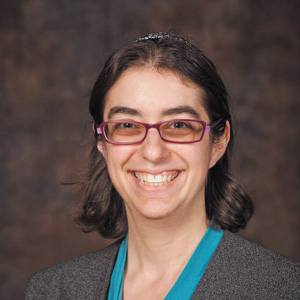Parashat Shemini — Owning Traditions
Published March 19, 2014
There is something really comforting about tradition, about doing things that connect us to our personal and collective past. For some of us, this means that every year, on certain holidays, we cook favorite family recipes that we have eaten since childhood. Passover, for me, just isn’t the same without chocolate chip meringue cookies like the ones that my mother makes every year. As we cook these memory-inciting foods, we recall our mothers (or fathers or aunts or uncles) and grandmothers (or other relatives) cooking as we watched on, hoping for a taste. For others of us, this connection to tradition comes more from the handling of tangible items, such our grandparents’ cherished chanukiah or Shabbat tablecloth or perhaps a challah cover we made in kindergarten. The sight and smell of these foods or items, whether they have been passed down from generation to generation or have simply made their appearance every year since they were created by a child in school, bring up recollections of family meals across the years, of conversations, activities, and us at different stages of life and connect us with our past.
For many, the ritual items that we wear on a daily basis, kippah, tallit, and tefillin, serve precisely that function. They connect us with something greater than ourselves, something that is older and more rooted. They bring us comfort because they represent tradition and connect each of us today with what Jews have done for thousands of years.
Last week, as the sixth- and seventh-grade students at Saul Mirowitz Jewish Community School were learning about tefillin, inscribing their own mock parchment scrolls and constructing their own model sets of tefillin, I read about a recent discovery of other, much older sets of tefillin and the scrolls inside them. These tefillin were found at Qumran, (the site of the Dead sea Scrolls), and are approximately 2100 years old. Archeologists don’t yet know whether these scrolls contain any of the same words that Jewish scribes, and my students, so carefully copy onto the parchments we place into tefillin today. However, according to one expert on first-century Judaism, some of the tefillin texts from Qumran that have already been examined were identical to those used today, while others include both the text we currently use and other additional selections from the Torah as well. It is those differences coupled with the similarities that make tradition come alive as something relevant today.
In this sense, tradition is not just about preserving the past. It is about taking the past and adding our own stamp to it. When I bake my mother’s meringues, they don’t always come out exactly as hers do. When the students painted their wooden tefillin, they each added some of their personality into the design. So too, when I put on my tefillin, they are not the same pair that my grandfather or great-grandfather presumably owned. But, I know that when I hold them in my hand, and when I wrap myself in them, I am joining in a tradition that stretches back more than 2,000 years to the Jews of Qumran and to Michal, the daughter of King Saul and wife of King David, who, the Talmud tells us, would put on tefillin every day (even though according to tradition there is no halakhic requirement for a woman to do so; JT Eruvin 10:1, 26a).
With each day and each Jewish holiday, we are all given the opportunity to connect with both personal and communal traditions, and to make them our own. As we (hopefully, finally!) move into spring, the season of rebirth and renewal, I urge you to find Jewish traditions to connect with and add your own stamp.















